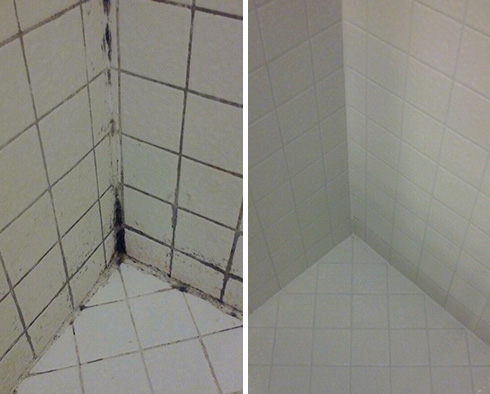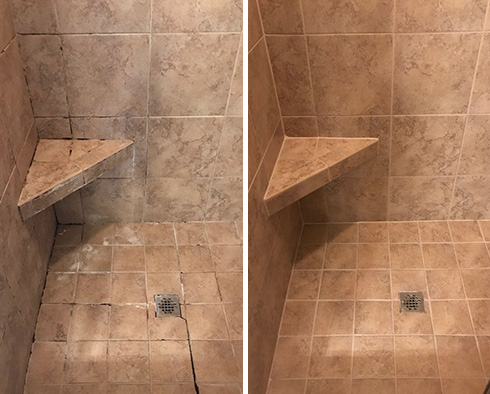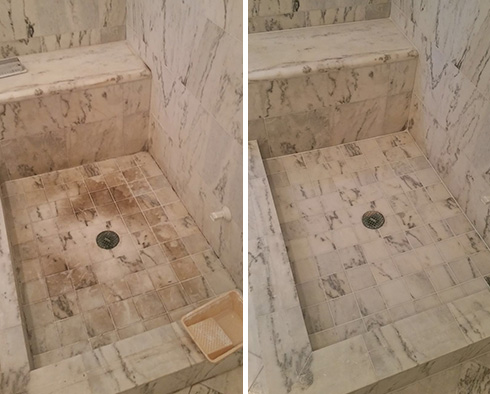How to Turn Back the Clock on a Faded Marble Floor with Honing and Polishing
January 26, 2022
Who doesn't dream of a home adorned in luxurious stone? Civilizations have idolized marble for ages long past in civilizations long dead.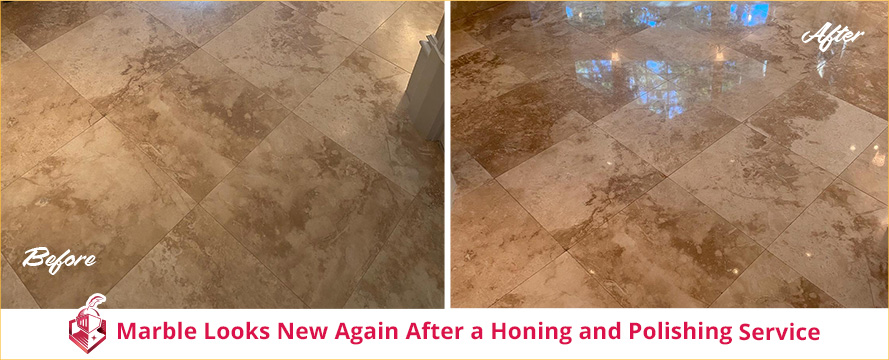
Travertine, marble, limestone, and granite lend a beauty to a home that gives a homeowner confidence to show off their beautiful abode.
Of course, buying a home or building a home with marble surfaces is just the first step toward successful ownership. Maintenance is where the challenge truly lies.
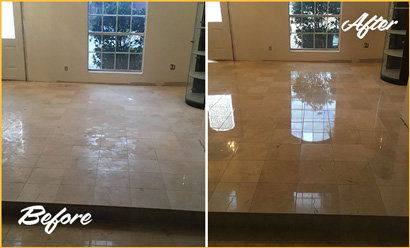
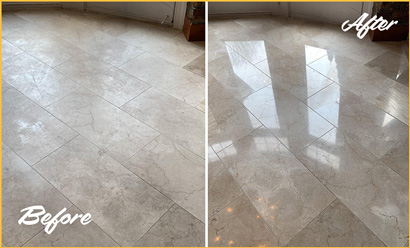
It's pretty amazing that we (humans) have been using stone materials for more than 2 millennia, yet still struggle with the proper method for cleaning a surface that has been so integral to the formation of many of our societies.
The fact is, most of the damage we discover on marble or natural stone is a result of how it was cleaned. Since this is such a confusing part of the puzzle, we really feel like heroes when we get the opportunity to restore and teach our customers the best way to clean their stone surfaces.
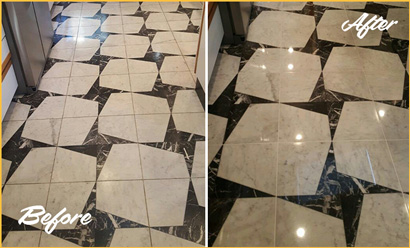
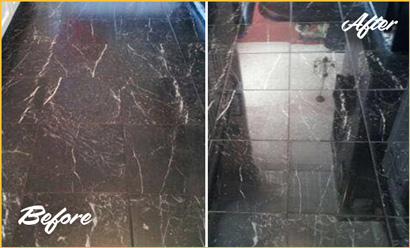
In the case of the stone above, a marble honing and polishing restored the stone to look as good as new.
Many customers think their marble is destroyed forever when the shine starts to disappear. This is rarely the case. Most marble can simply be honed and polished to a brand-new look.
Take a look at the photo above: you can see a significant restoration to the overall color and tone of the marble itself. The sheen is back in the form of polish, and the dullness is completely gone.
The stone looks new again – nothing was replaced; it was simply resurfaced. There was no extra time, mess, or expense of a demolition and remodel. It was done in the course of a day.
How does damage occur on marble?
We can't stress this enough. It's more expensive to resurface or remodel your stone than it is to buy the proper cleaning products.
However, if you're going to make your own cleaning products, please buy some pH test strips and check the levels of your homemade cleaning solution. Never use vinegar and water on marble.
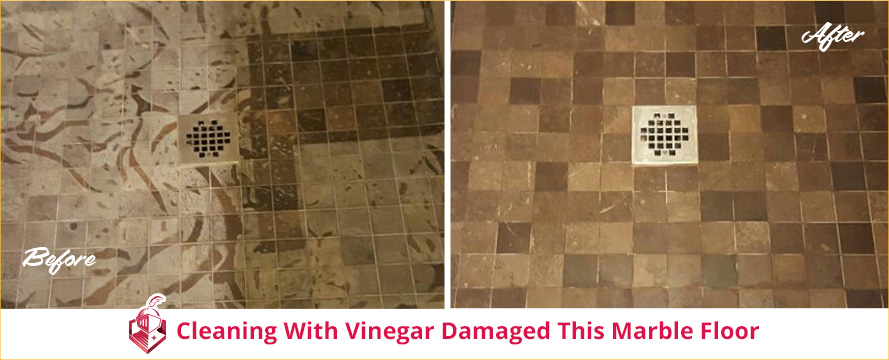
Vinegar is an acid, and when mixed with water, it forms an acidic solution that will lift some of the dirt and mold from your floor – and with it, the surface of your marble. You see, acid reacts with calcium-based stones like marble, travertine, and limestone.
It bonds with the calcium and changes the molecular composition, creating those etch marks that look like water marks and ruin that beautiful, shiny polish that your marble should always have.
How do I clean my marble?
Ideally, you'll use a pH-neutral soapless floor cleaner on your marble. The reason for this is two-fold: a neutral pH guarantees that no damage from acids occurs.
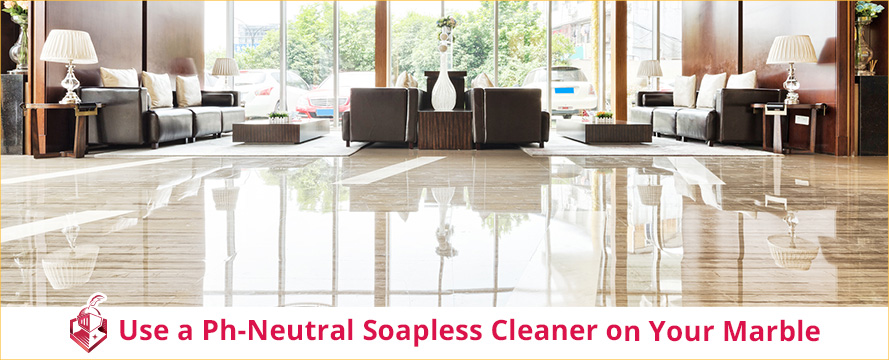
The second reason is that no soap guarantees that no film is left behind to attract dirt and grime. Soap scum, which is great for removing oil and grease from dishes, also creates a hotbed for mold and dirt.
Since it's difficult to properly rinse the floor, it will look momentarily clean after using soap, but then EVERYTHING will stick to it.
Just think of what happens to your sponge after you clean some dishes. If you don't rinse the soap-free and wring it out, that soap scum begins to sour the sponge, and soon you're left wiping a dirty mold haven all over the tools you use for your food. That's not a great idea – just like leaving your floor scummy with film is not a good idea.
Gently wash the floor with the balanced, soap-free cleaner and you'll be left with a shiny surface that does not attract extra contaminants.
It's too late – I have etch marks!
It's never too late. We can easily hone out the marks and polish your surfaces. Don't be afraid.
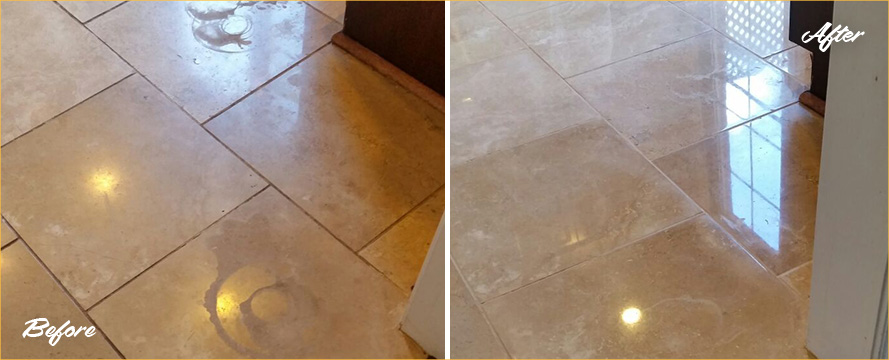
Call us at (866) 476-8863 for a free evaluation, and we'll evaluate your stone floor for the proper restoration method as soon as possible!


